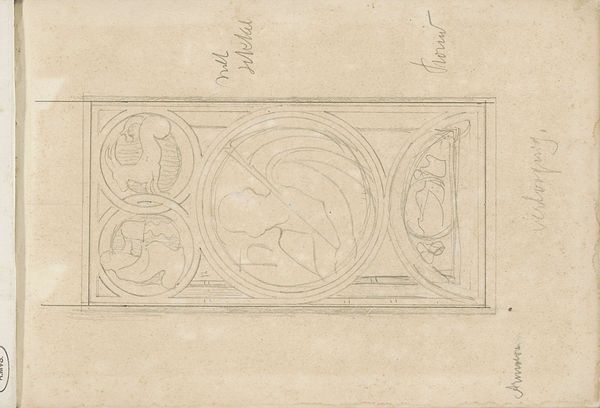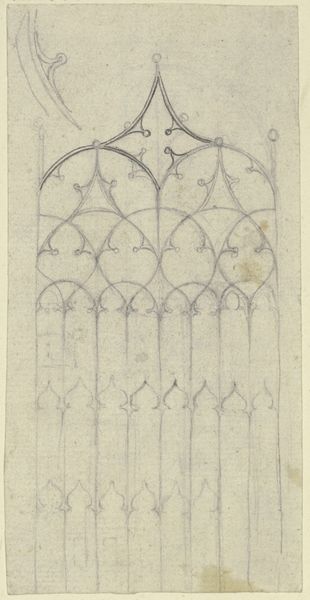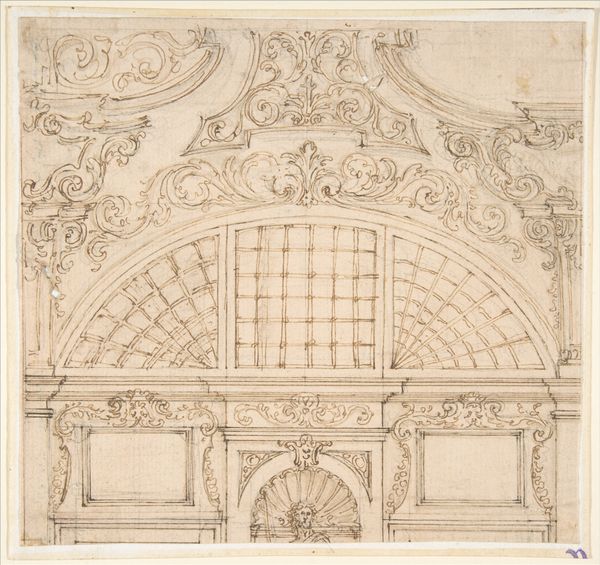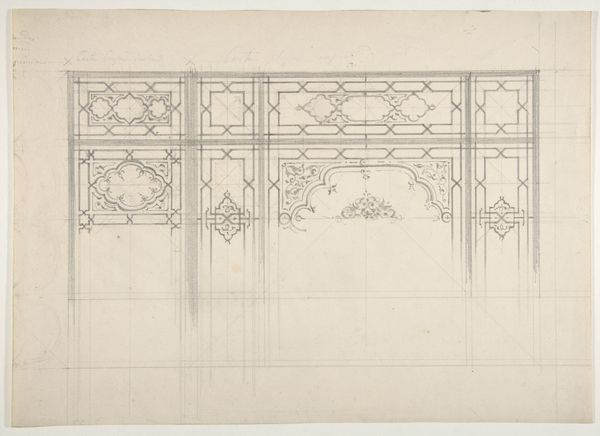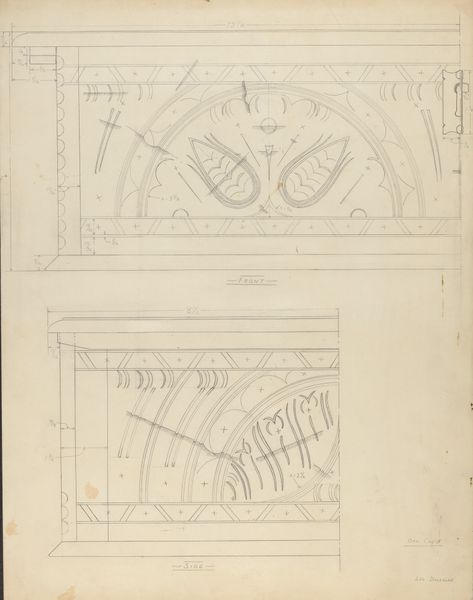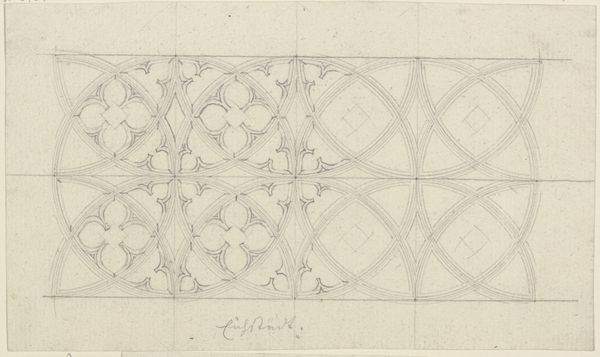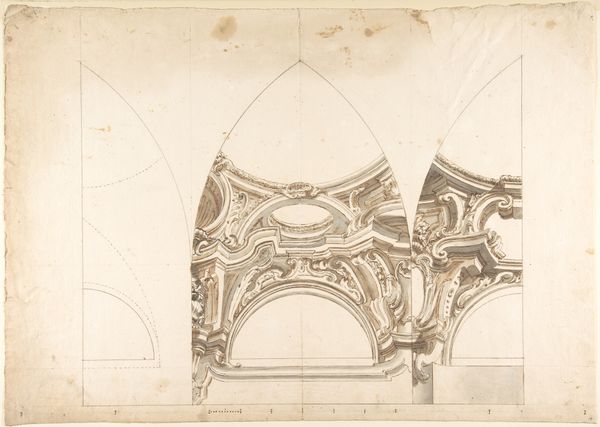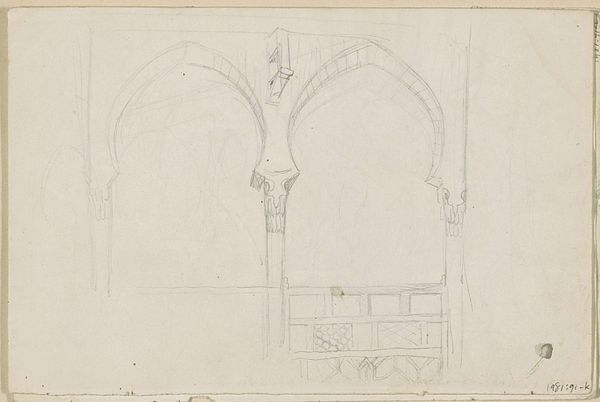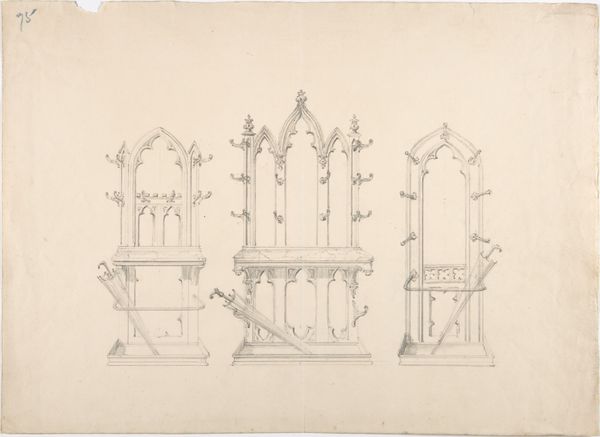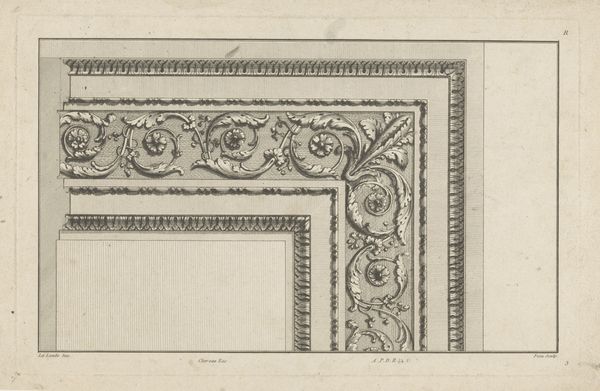
drawing, print, etching, pencil
#
drawing
# print
#
etching
#
etching
#
form
#
geometric
#
pencil
#
line
Dimensions: sheet: 5 5/16 x 10 7/16 in. (13.5 x 26.5 cm)
Copyright: Public Domain
Editor: Here we have an "Arched Panel of Wrought Iron Ornament" from between 1850 and 1900. It’s an anonymous work at the Met, rendered in pencil and etching. The intricate linework gives it such an airy, almost ephemeral feel. How do you interpret this work? Curator: The primary interest for me resides in the linear quality itself. Notice how the composition relies solely on line to delineate form and space. Consider the starkness; devoid of color or shading, the piece demands that we appreciate the raw structure. What semiotic relationships are evoked by these geometric and curving shapes, particularly when juxtaposed? Editor: Semiotic relationships? So you mean like how the arch suggests support or enclosure? And how the flowery bits contrast with the rigid structure? Curator: Precisely! Observe also the conscious articulation of space. The lines create a tangible sense of depth and volume, manipulating positive and negative space. Where does your eye rest, and how does the artist direct that movement? Editor: My eye definitely goes to the center first, because of the symmetry. Then I sort of follow the curves outward along the arch. Curator: Indeed. The composition orchestrates our gaze through a deliberate arrangement of visual elements. Disregarding function completely, what does this purely formal analysis reveal? Editor: I see a study in contrasts – delicate versus strong, open versus closed. It seems to show how simple lines can create something really complex and interesting. I hadn't thought about it that way at first! Curator: Exactly! It's about more than just the image of an iron panel, isn't it? Through careful analysis of the structural and material qualities, we unearth meaning.
Comments
No comments
Be the first to comment and join the conversation on the ultimate creative platform.


